Everything you Need to Know About Wood Stoves
Unless you are homesteading, have a smallholding or farm, most people would not consider using wood as a fuel source for either cooking or heating. And there are those again, who are homesteading, and still would prefer alternative fuels for heating and cooking because, when it is all said and done, using wood is not a fuel that is considered particularly efficient for generating heat.
This is especially so for open fires where a lot of the heat is lost going up the chimney. Wood stoves are a lot better if they are enclosed and air-tight.
Coal and oil, are far more efficient sources of heat, but can be more expensive. I am an advocate of wood as a fuel.
First of all, wood is a sustainable energy source, secondly, with peak oil now a reality, we shouldn’t be reliant on oil as a heat source, and thirdly, there is nothing more comforting than snuggling up on a couch beside a log fire, being totally mesmerized by the dancing blue and yellow flames as they move along the wood throughout the evening.
Wood stoves and your Health
Some consider wood fuel bad for the environment, however this is not the case if proper techniques are used. Carbon dioxide released from burning wood is equal to the carbon wood releases as it rots. One might increase carbon emissions using gas powered saws and splitters in the production of firewood, but when wood heat replaces carbon-producing fuels such as propane, heating oil or electricity from a coal-burning plant, then wood burning has a positive impact on the carbon footprint.
How much Wood to Order for your Wood Stove
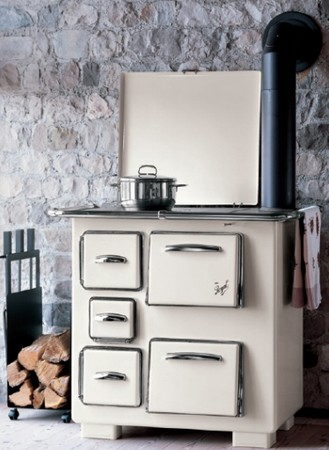 When
ordering your wood
for the winter make sure
that you have ordered enough. Wood can either
be sold by weight as a metric tonne, or my volume as cubic meters. You
will also hear people buying wood by the cord. 1
tonne of wood is equivalent to 2 cubic meters. This means that if you
were to stack it, it would measure 1 meter wide, by 1 meter high, by 2
meters long.
When
ordering your wood
for the winter make sure
that you have ordered enough. Wood can either
be sold by weight as a metric tonne, or my volume as cubic meters. You
will also hear people buying wood by the cord. 1
tonne of wood is equivalent to 2 cubic meters. This means that if you
were to stack it, it would measure 1 meter wide, by 1 meter high, by 2
meters long.You will also have to take into consideration the BTUs. BTU's (British Thermal Units) are a standard of measurement which represent the heat value of any type of energy used to create heat.
The amount of fuel that a fireplace will consume per hour is calculated with the BTU value of the fuel it uses to determine the input of that fireplace. BTU values of any type of energy are determined by the actual amount of heat required to increase the temperature of one pound of water, by one degree Fahrenheit.
So how much fuel do fireplaces consume and how much do they cost to operate? This is easily calculated provided that you have the local price of the fuel to be used. The BTU of the fireplace is divided by the BTU value of the fuel to determine the amount of fuel consumed per hour. Example: A wood stove that has an input of 30,000 BTU per hour consumes 30,000 / 1000 = 30 cubic feet/hour. If the price of the fuel is .35 cents ($0.0035) per cubic foot then 30 cubic feet x .35 = 10.5 cents ($0.105). Therefore the cost of operating a 30,000 BTU wood stove for one hour is 10.5 cents.
Wood Stoves and Seasoned Wood
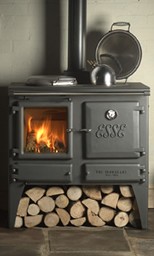 You
really need to make sure
that your
wood has been well-dried. Green wood of course won’t burn,
but will just
hiss and smoke, making things very unpleasant. To check that your wood
is good, it should be free from sap and bark, and if you check the ends
of the wood you should be able to see the radial cracks.
You
really need to make sure
that your
wood has been well-dried. Green wood of course won’t burn,
but will just
hiss and smoke, making things very unpleasant. To check that your wood
is good, it should be free from sap and bark, and if you check the ends
of the wood you should be able to see the radial cracks.
You will also be able to feel how dry your wood is by just picking it up. If it feels heavy, they wood is still too wet. The lighter it is, the better it will burn.
Of course, you can also find free wood for your fireplaces. We are lucky enough to have a small forest that is part of our property that we manage, and which will provide us, in time, with a fair amount of wood for our wood stove for cooking, as well as the fireplaces. If you don’t have access to woodlands that are yours, then you can find wood freely available at other outlets such as factories, packing or transportation companies.
However, there is a word of warning here, and that is that some wood may have been treated and when burned can give off toxic smoke. If the wood has a greenish or yellowish tinge stay clear, as it probably has been treated, and you will need to ask first before deciding whether it is safe to use or not.
Wood Stoves and Safety
Wood stoves, as mentioned earlier, are not as romantic as an open fire, but definitely more efficient in generating heat from the same amount of wood. Not only can wood stoves be used to generate warmth and to cook on, but they can also be used to heat your water supply. After you have made sure that your stove is airtight, it can be loaded, closed, and then forgotten about, long after you have gone to bed still working away, keeping your house warm while you sleep, with no worries about stray sparks or logs.
Wood stoves these days are rather sophisticated and the top of the range models have built in thermostats that can be set at the preferred temperature. So no longer will you be subjected to a stuffy room from overheating. They have also been built to be more efficient so that they burn less wood than in the past, as well as being fitted with emission retarders so make them more environmentally friendly.
What Size Wood Stove should you Buy?
The size of the wood stove really needs to fit the space for which it is required. If it is too big for the space needed for heating, it will always be turned down low leading to a build up of creosote in your flue, which in turn causes air pollution. If you are aiming to live green, this is of course not what you want. And a small stove in a large space will be inefficient and under-productive.
Where to Place your Wood Stoves
Choose the location well for your new stove taking into consideration how far it is from your wood source, which could mean muddy footprints trailing throughout the house every time you go and get some wood. Also using an existing flue is far cheaper than having a new flue constructed. However, one may be forced into not using the existing flue if it doesn’t have what you need for optimal efficiency.
Your flue should be wide and straight, minimizing kinks in the pipes, and the chimney should be 1 meter higher than the roof line, and 3 meters away from other structures, and be covered by a rain excluder cap. The flue should also have a good, even draft to ensure that the stove doesn’t smoke. If the flue's capacity is either too high or too low, smoking will occur in both cases.
Installing of Wood Stoves
When making your purchase, check with your council to make sure that you have all building permits in place, as if you haven’t had a wood stove before, alterations to your house will be required.
Also check with your council about acceptable rates of smoke emissions for your area. These two things should be done before making the purchase.
The Dangers of Wood Stoves
Finally, don’t let the creosote build up in the flue year after year, as again this is a dangerous practice and the chimney could catch fire. Creosote is caused by incomplete combustion of the wood. The unburned matter, or tar, mixes with the water vapor given off by the fire and goes up the chimney as smoke. As the smoke travels up the chimney, it passes cooler, upper-surfaces of the chimney where the vapor and the tar condense forming the black, sticky substance called creosote. As it builds up it drips down the chimney flue, onto ledges, elbows and junctions and if not cleaned, will ignite. If you have used your wood stove throughout the winter, call a professional chimney sweeper in to clean it out in the spring.
In order to reduce your creosote build up during the operational months in your airtight wood stoves burn a small but hot fire to burn freely for about 20 minutes every time you use it. What happens is that some of the condensed creosote is then revaporized and blown out of the flue. This also works well for open fireplaces, but only after they have been well cleaned by a chimney sweeper first.
Buy some Wood Stove Accessories
Click on any of the pictures to see the prices and details of each product.Add your Own Comments on Wood Stoves here!
Do you use a wood stove? Do you love or hate the experience? Tell us all about it here.
Leave a Comment
Do you have anything that you would like to add after reading this page? We would love to hear your thoughts. If you can add additional information to what has been written here you will be adding value to the website! No need to have any special skills - just type and submit. We will do the rest!
Other Comments
Click below to see comments from other visitors to this page...
Love my wood stove. 




I have had a fireplace for years but due to the inefficient burning of my fireplace I decided to buy a wood stove. I found that I was burning way too much …





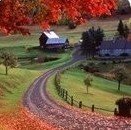
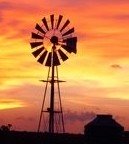
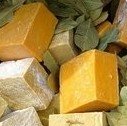
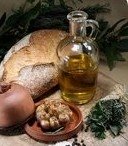

New! Comments
Do you have something of value to add? Leave me a comment in the box below.